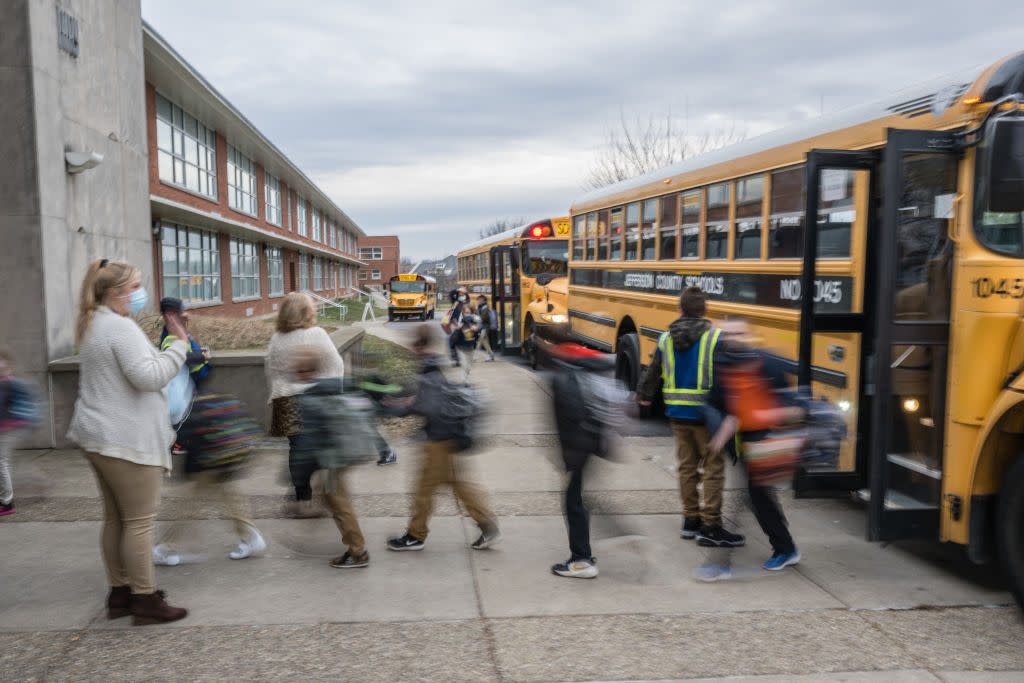The first step to equity is getting students to and from a great school

Road funding will be a central part of the 2025 legislative session and lawmakers have an opportunity to make Indiana a nationwide model for equitable school transportation. (Getty Images)
Teachers aren’t supposed to have favorite students, but a few years back, mine was Derrien. I crack a lot of jokes when I teach, and he always kept pace with a witty comeback. He put his wits to use daily in my science class, generating insights that had me learning alongside him. My favorite part, though, was his daily salutation when he got off the bus: “Mr. Shah, how’s your morning starting today?”
So I was dismayed in February when, one morning, I didn’t get my usual greeting. I figured he had a doctor’s appointment or something, but the next day, the day after, nothing. I found out Derrien’s family had moved out of the district, and no longer was in range of our buses. Mid-year school changes are extremely disruptive to a student’s education, but they happen all the time. I figured he was just too far from our school to stay enrolled with us.
Imagine my surprise when I learned that he had only moved a few blocks over.
I realized what had happened. Look at any map of Indianapolis’ eleven school districts and you will, too. The boundaries are fragmented and peculiar, fraying on the west side and an archipelago on the east. They mark historic lines of segregation that have been enshrined in state law since UniGov. In some parts of the city, you can drive five blocks and pass through three different districts.
The upshot of this hit me at a six-way traffic light a few months ago. Four school buses – one for Warren, one for Lawrence, one for an eastside charter, and one for IPS – were all stuck in the same traffic.
Discrimination
I chuckled at the inefficiency, but the artificial lines between districts and enrollment zones mark very real barriers to students getting to and from the schools they choose.
A lack of transportation implicitly discriminates against students in poverty, in unstable housing, or with significant disabilities. Yet in 2015, the Indiana Supreme Court confirmed that Indiana schools are not constitutionally required to provide transportation. If a district, charter, or private school provides busing, it does so by choice, relying on local property tax revenue. And it’s only getting pricier. School transportation has been facing a hailstorm of challenges including driver shortages, rising operational costs, redundant routes, pedestrian safety, and an aging fleet.
Indiana is unusual, but there are as many ways to fund school transportation as there are states, running the gamut from state lump sums, local levies, per-pupil grants, user fees, and even reimbursement for public transit. The variety of schemes is dizzying, but each carries its own lessons for Indiana. Through decades of education reform, transportation has remained largely untouched. But students can’t have a great education if they can’t get to a great school.
With road funding looming large over the 2025 legislative session, we have an opportunity to make Indiana a nationwide model for equitable school transportation.
Recommendations
First, the state should offer baseline funding to at least ensure that students from Kindergarten through 8th grade have access to transportation to their school of their choice. This can be limited by radius or road distance to their pickup address, but it should be irrespective of school type and arbitrary, racially-drawn district lines.
Second, any school that accepts public funding should be required to offer opt-in transportation to students. While some states both require and fund this, Indiana has enabled a more scattershot approach. Many schools, especially smaller and more isolated ones, have struggled to offer transportation and have explicitly asked for consistency. A unified expectation ensures that transportation and equity will not be in conflict.
Finally, districts shouldn’t stand alone in managing busing for all schools. Many, especially in rural counties, are already facing financial cliffs because of transportation. When Ohio required districts to bus students to charter and private schools, it led to conflicts, fines, lawsuits, and settlements. A better approach could be managing school transportation at the county level, with a unified open enrollment system and multiple stops at schools along the same route. This gives drivers opportunities to run fuller shifts with better wages, and lets us invest in newer, safer buses.
Sitting at that intersection looking at those buses, I wondered for a moment if Derrien might be on one of them. I thought about how being on a different bus at the same traffic light offered completely different educational opportunities. This year, let’s design a better school transportation system that serves all students equitably.
GET THE MORNING HEADLINES DELIVERED TO YOUR INBOX
The post The first step to equity is getting students to and from a great school appeared first on Indiana Capital Chronicle.

